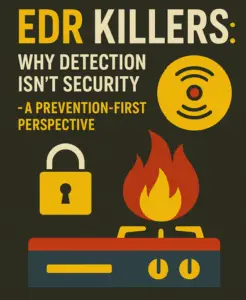Cybersecurity incidents have become an unfortunate reality for organizations of all sizes and industries. From data breaches to ransomware attacks, the results of these incidents can be severe, ranging from financial loss to reputational damage. It’s not a matter of if, but when and how bad these days. That’s why having a robust incident response and management plan is crucial for every business, even if you have prevention-centric solutions.
Incident response and management involve the organization’s processes and procedures when an unexpected event occurs. This could include accidents, natural disasters, security breaches, or any other incidents that threaten the safety and security of employees, customers, or the organization’s assets.
A well-designed incident response and management plan can help organizations:
• Minimize Damage: A quick and effective response can help minimize the impact of an incident, reducing downtime and financial loss.
• Maintain Trust: By responding promptly and transparently to incidents, organizations can maintain the trust of their customers, employees, and investors.
• Learn and Improve: Post-incident analysis can provide valuable insights that help organizations improve their security posture and prevent similar incidents in the future.
The Key Components of an Effective Incident Response Plan
An effective incident response plan should include the following components:
1. Preparation and Planning: This involves identifying potential risks, assessing vulnerabilities, and developing response procedures for different types of incidents.
2. Detection and Identification: You should have systems in place to detect and identify incidents as soon as possible. This could include intrusion detection systems, security monitoring solutions, and employee reporting mechanisms.
o BLOKWORX Solution: Secure Network Perimeter Response (SNPR) enhances your network security by monitoring and defending your network perimeter against cyber threats.
3. Containment and Mitigation: Once an incident has been detected, the next step is to contain it and prevent further damage. This may involve isolating affected systems, shutting down compromised accounts, or blocking malicious traffic.
o BLOKWORX Solution: Our Managed Advanced Endpoint Defense (MAED) combined with Endpoint Detection and Response (EDR) ensures proactive endpoint security, stopping threats before they escalate.
4. Eradication and Recovery: After containing the incident, the next priority is to eradicate the threat and restore normal operations. This could involve removing malware, restoring data from backups, and implementing additional security measures to prevent future incidents.
5. Post-Incident Analysis and Follow-Up: BLOKWORX provides our partners with details of events, even when they have been prevented, ensuring persistent footholds are resolved to stop further attempts.
Prevention-Centric Cybersecurity
While incident response and management are critical for minimizing the impact of cybersecurity incidents, an effective cybersecurity strategy should also be prevention-centric. This means taking proactive measures to prevent incidents from occurring in the first place.
Some key elements of a prevention-centric cybersecurity strategy include:
• Risk & Patch Assessment: Regularly assess your organization’s cybersecurity risks and vulnerabilities, and take steps to address any weaknesses.
o BLOKWORX Solution: Managed Vulnerability Assessment Platform (MVAP) ensures your systems are up to date with the latest security patches, protecting against known vulnerabilities.
• Security Awareness Training: Educate employees about cybersecurity best practices, including how to recognize phishing attempts, use strong passwords, and avoid downloading malicious software.
• Access Control: Limit access to sensitive data and systems to only those employees who need it to perform their jobs.
• Network Security: Implement firewalls, intrusion detection systems, and other network security measures to prevent unauthorized access to your systems and data.
• Endpoint Protection: Combine BLOKWORX’s Managed Advanced Endpoint Defense (MAED) with Endpoint Detection and Response (EDR) for proactive endpoint security that stops threats before they escalate, saving you downtime and preventing catastrophic attacks.
• Email Security: Implement email security measures such as Secure Cloud Unified Defense (SCUD) combined with (CDR) to protect against email-based threats.
By combining a robust incident response and management plan with BLOKWORX’s prevention-centric cybersecurity solutions, organizations can better protect themselves from the growing threat of cyberattacks and minimize the impact of any incidents that do occur.
Ready to strengthen your cybersecurity defenses? Contact us to learn more about BLOKWORX solutions and how they can help protect your business from cyber threats. Our solutions include:
• Managed Advanced Endpoint Defense (MAED) + EDR
• Secure Network Perimeter Response (SNPR)
• Cloud Managed Network Defense (CMND)
• Secure Cloud Unified Defense (SCUD) + CDR
• Managed Vulnerability Assessment Platform (MVAP)
Remember, cybersecurity is an ongoing process, and staying vigilant is key to staying ahead of cyber threats.



